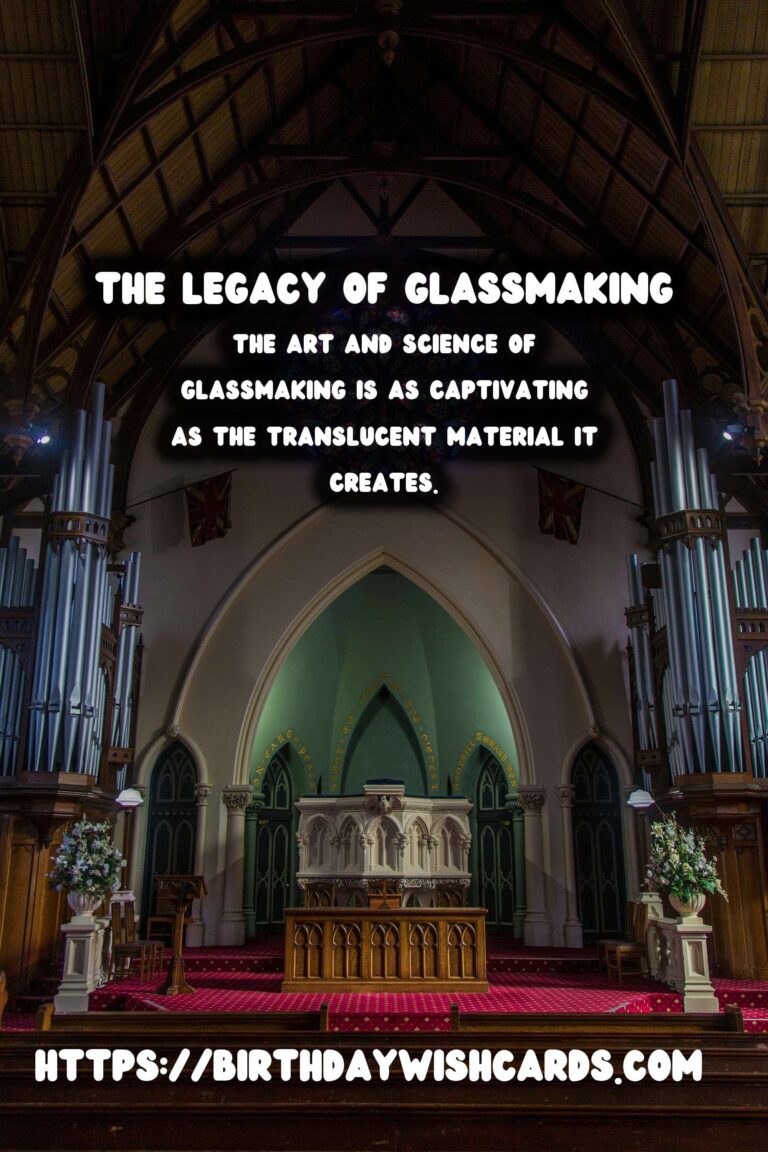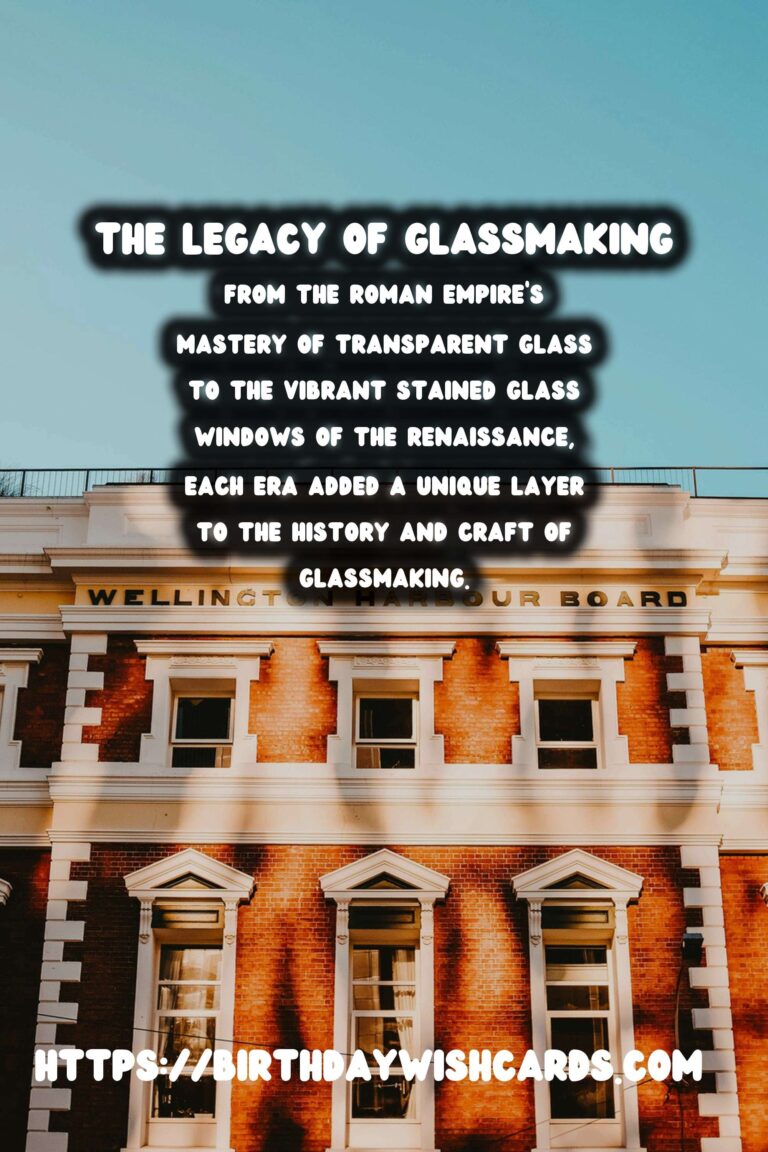
The art and science of glassmaking is as captivating as the translucent material it creates. Spanning centuries and geographies, glass has played a quintessential role in both functional applications and as an artistic medium. From the Roman Empire’s mastery of transparent glass to the vibrant stained glass windows of the Renaissance, each era added a unique layer to the history and craft of glassmaking.
The Origins of Glassmaking
Historians trace the earliest evidence of rudimentary glassmaking back to Mesopotamia around 2000 BC. At that time, glass was a luxury item reserved for the elite. Created essentially as a byproduct of metal smelting, early glass artifacts were often small beads and vessels used for decoration.
As techniques evolved and spread across cultures, significant advancements emerged. The Egyptians, renowned for their vibrant art, developed glass inlay, mosaic patterns, and more functional uses of glass in their religious rituals and daily life.
The Roman Empire: Masters of Transparent Glass
One of the first civilizations to transform glassmaking into an industrialized craft was the Roman Empire. Not only did they refine the method of glassblowing, but they also pioneered techniques like casting, cutting, and engraving that remain foundations of the craft today. Roman artisans excelled at transforming molten glass into a variety of shapes and introduced the use of clear glass, revolutionizing its use in windows and utensils.
The wide-reaching trade networks of the Romans helped spread knowledge and demand for glass goods, which became more accessible to the masses. They also elevated glass to a decorative art, with exquisite mosaic tiles and intricate bottles.
Medieval Innovations and Islamic Influence
Following the decline of the Roman Empire, glassmaking techniques were conserved and expanded upon in the Islamic world. Islamic glassmakers introduced new styles and techniques, such as gilding and enameling, which focused on the aesthetic quality of glass. Islamic glass was often characterized by its vibrant color palette and complex geometric patterns.
During this period, Venetian glassmaking also began to gain prominence. The island of Murano became synonymous with innovative glass production, renowned for its quality and the secretive nature of its techniques.
The Renaissance and the Splendor of Stained Glass
The Renaissance period marked a rebirth of art and knowledge, and glassmaking was no exception. One of the most iconic uses of glass during this time was in the form of stained glass windows, which adorned churches and cathedrals across Europe.
These windows utilized small pieces of colored glass arranged to form intricate designs, illuminated by natural light to tell stories and convey religious themes. The use of stained glass became not only an artistic endeavor but also an engineering feat, as craftsmen perfected the methods needed to produce and install large, stable panels.
The Legacy of Glassmaking
Today, the technology of glassmaking continues to evolve, yet the influence of historical techniques is evident. Modern artisans often look to the past for inspiration, combining age-old practices with contemporary designs and science to further the art form.
Whether it’s through the serendipitous spectacle of the Fibonacci-inspired glass works or the mesmerizing creations seen in urban glass art, the legacy of glassmaking endures, continuing to shape and reflect human culture.
Conclusion
From its origins as a luxury good to its place in today’s design landscape, glass has fundamentally shaped human history. Whether in the intricacy of a Renaissance stained glass window or the functionality of glassware, this material offers endless possibilities. The journey from ancient discoveries to modern advancements in glassmaking illustrates not only the material’s transformative nature but also our enduring fascination with turning sand into art.
The art and science of glassmaking is as captivating as the translucent material it creates. From the Roman Empire’s mastery of transparent glass to the vibrant stained glass windows of the Renaissance, each era added a unique layer to the history and craft of glassmaking. 









#glassmaking #history




